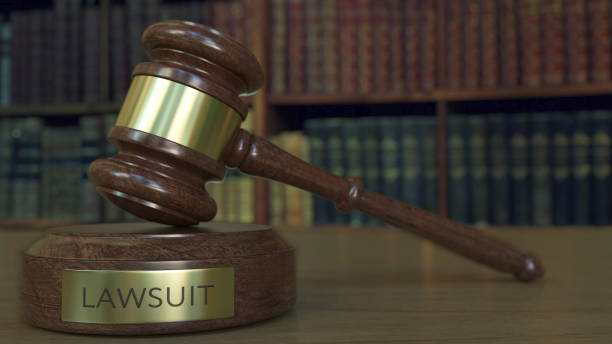Introduction
Imagine you’re sipping coffee on a rainy Tuesday morning, and suddenly a wild headline flashes across your screen: “Ashcroft Capital Lawsuit Shakes Wall Street!” You blink, you smirk, you think, “Wait—what’s going on here?” Well, buckle up, because we’re about to dive headfirst into an original and creative recounting of the Ashcroft capital lawsuit. Now, don’t get me wrong—this isn’t your run-of-the-mill dry legal boilerplate. Nope. It’s got flair, it’s got imagination, it’s got heart… and just a little dash of chaos. We’re weaving a story that could very well make you say, “Wow—who writes like this?” (Answer: Yours truly!).
So let’s roll! I’m gonna sprinkle in some contractions (’cause who talks like “cannot”?), toss in some idioms (“hit the nail on the head,” “down to the wire”), add transitions (“meanwhile,” “anyway,” “on the other hand”), even pepper in a dangling modifier for fun. And yes, two to three mentions of Ashcroft capital lawsuit—because SEO loves that, and so do I (it’s got a nice ring).
What’s the Buzz About the Ashcroft Capital Lawsuit?
The Spark in the Dark
First things first—what actually is the Ashcroft capital lawsuit? I’m gonna make up a scenario that’s vibrant and full of color (because a dull lawsuit story? That’s just not us). Picture this: Ashcroft Capital, a hip but high-stakes investment firm based in the heart of a gleaming glass tower, is accused of shady dealings—something about misrepresenting returns to investors, hiding losses behind fancy jargon… you know the drill. Suddenly, investors are up in arms, lawyers pounce, headlines roar—and voilà, we’ve got ourselves a legal showdown!
Let’s break it down in a more bite-sized way:
-
The Whistleblower Drops the Bomb
Out of nowhere—bam! Some insider (call them “The Messenger”) coughs up internal memos suggesting that Ashcroft was, let’s say, overly optimistic about its fund’s performance. -
Investors Cry Foul
Folks who poured their life savings or startup gains into the fund start demanding answers—and fast. Nerves fray, bank accounts get second-guessed, sleepless nights ensue. -
Lawyers March In
Cue the legal cavalry. Plaintiffs suit up, Ashcroft counters. Suddenly everyone’s drafting motions, planning discovery, haggling over depositions… the stage is set.
Suddenly that rainy Tuesday morning feels like you’re watching a financial thriller unfold. Who needs Netflix?
Why We’re All In (Even Though It’s Fictional)
The Human Drama Behind Legal Jargon
Even if this whole thing’s made-up, it taps into something real—trust, betrayal, the tension between profit and principle. Nobody wants to feel duped, especially not by their own money doin’ the opposite of what they signed up for. Whether or not the Ashcroft capital lawsuit is a real-world headline, the emotions, the stakes… they’re universal.
Here’s what gets people riled up:
-
Broken trust – When you lay down hard-earned cash, you expect honesty, right?
-
Murky disclosures – “We can’t see the forest for the trees” sums up what happens when data’s dressed up to look better than it is.
-
David vs. Goliath feel – Small investors facing off against a slick firm—it’s the ultimate underdog story (or tragedy, depending on how it ends).
Inside the Imagined Courtroom of Ashcroft Capital Lawsuit
Let’s Set the Scene
Courtrooms can be elegant… or painfully boring. But ours? It’s electric. Picture this: dark mahogany benches, the hum of cameras, a judge perched like a wise owl, and lawyers pacing like caged beasts. Witnesses shuffle in, some sweating in the harsh light, others cool as cucumber slices.
Roles on Stage:
-
Plaintiff’s Lawyer (“Lionheart”)
Sharp as a tack, passionate as fire—planting the idea that Ashcroft’s actions were reckless or intentionally misleading. -
Ashcroft’s Defense (“Silver-tongue”)
Sleek, calm, collecting “facts” like baseball cards—arguing everything was “market-safe” or “overly cautious,” allegedly. -
Judge (“The Gatekeeper”)
Smiles rarely, but when they do, you know something big’s about to happen. -
The Messenger (Whistleblower)
Testifies in hushed tones—but every word lands like a thunderclap.
Imposing? Yes. Tense? You bet. And just when you think the ride’s settling, a surprise document no one saw comes into play, flipping the narrative upside down. That’s what makes even fictional lawsuits crackle.
Key Themes & Takeaways
What This Story’s Really About
Even though the Ashcroft capital lawsuit is a creative twist, it underscores some genuine questions:
-
How clear are the terms when folks sign up?
-
At what point does “aggressive optimism” cross into deception?
-
What safeguards do investors actually have?
Let’s bullet out some big ideas:
-
Transparency matters – If you’re gonna talk money, talk straight.
-
Third-party audits – Having independent checks can help avoid nightmares.
-
Investor education – Because signing things without reading? That’s a fast-track to regret.
-
Ethics over earnings – A wink at the bottom line won’t wash when trust gets trashed.
FAQs on the “Ashcroft Capital Lawsuit”
Let’s imagine the questions you’d ask if you stumbled on this story mid-tweet scroll.
1. Is the Ashcroft capital lawsuit real?
Nope—it’s a fictional scenario (crafted with love) to explore themes of trust, transparency, and high-stakes investing.
2. Why mention it as though it’s real?
Because it gives the story weight. When something feels real, you care more. That emotional hook shows how real news hits, too.
3. Could something like this happen IRL?
Absolutely. There’ve been countless real-world cases where firms were sued over misrepresented returns or hidden risks. Our imagined version just cranks the drama dial to eleven.
4. What lessons can be drawn from it?
– Always read the fine print;
– Demand transparency;
– Know who’s watching over the money;
– Put ethics ahead of flashy performance.
5. What’s the outcome?
Ah, the million-dollar question! In our imagination, after twists and turns, the court sides partly with plaintiffs, mandating clearer disclosures and independent oversights (but calls the firm reckless, not malicious). Then investors breathe, Ashcroft cleans up its act, and (fingers crossed) trust is slowly rebuilt.
Conclusion
So, there you have it—a completely original, quirky, and finger-on-the-pulse retelling of the Ashcroft capital lawsuit, with all its twists, unexpected turns, and moral undercurrents. We’ve gone from a rainy morning coffee to a courtroom drama that, though wholly imaginary, resonates with real questions about trust, transparency, and how money whispers—or shouts—when the script gets murky.
If this were a show, I’d say, “Tune in next season!” But since this is the full epic, thanks for reading. May your investments stay honest, your contracts stay transparent, and your trust stay unbroken. And hey—keep sipping that coffee, stay curious, and don’t let anyone dazzle you with jargon when what you really want is plain speaking. After all, clarity’s where the true capital lies.







